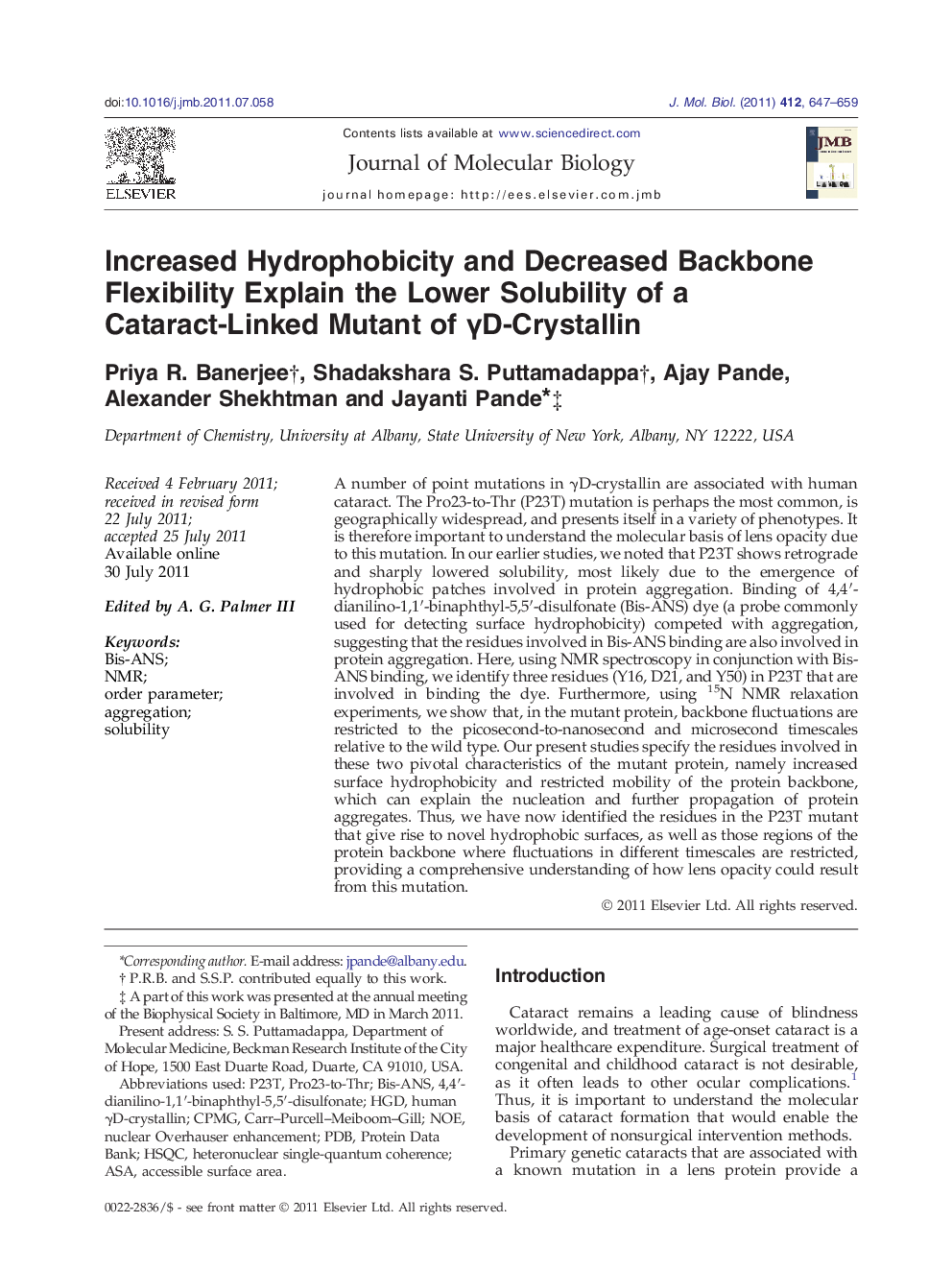| کد مقاله | کد نشریه | سال انتشار | مقاله انگلیسی | نسخه تمام متن |
|---|---|---|---|---|
| 2184770 | 1095927 | 2011 | 13 صفحه PDF | دانلود رایگان |

A number of point mutations in γD-crystallin are associated with human cataract. The Pro23-to-Thr (P23T) mutation is perhaps the most common, is geographically widespread, and presents itself in a variety of phenotypes. It is therefore important to understand the molecular basis of lens opacity due to this mutation. In our earlier studies, we noted that P23T shows retrograde and sharply lowered solubility, most likely due to the emergence of hydrophobic patches involved in protein aggregation. Binding of 4,4′-dianilino-1,1′-binaphthyl-5,5′-disulfonate (Bis-ANS) dye (a probe commonly used for detecting surface hydrophobicity) competed with aggregation, suggesting that the residues involved in Bis-ANS binding are also involved in protein aggregation. Here, using NMR spectroscopy in conjunction with Bis-ANS binding, we identify three residues (Y16, D21, and Y50) in P23T that are involved in binding the dye. Furthermore, using 15N NMR relaxation experiments, we show that, in the mutant protein, backbone fluctuations are restricted to the picosecond-to-nanosecond and microsecond timescales relative to the wild type. Our present studies specify the residues involved in these two pivotal characteristics of the mutant protein, namely increased surface hydrophobicity and restricted mobility of the protein backbone, which can explain the nucleation and further propagation of protein aggregates. Thus, we have now identified the residues in the P23T mutant that give rise to novel hydrophobic surfaces, as well as those regions of the protein backbone where fluctuations in different timescales are restricted, providing a comprehensive understanding of how lens opacity could result from this mutation.
Graphical AbstractFigure optionsDownload high-quality image (146 K)Download as PowerPoint slideResearch Highlights
► NMR dynamics studies of the cataract-associated P23T mutant of human γD-crystallin.
► Identification of residues involved in hydrophobic patches on the mutant protein.
► Specification of the backbone regions showing restricted mobility in the mutant.
► A comprehensive mechanism for the retrograde, and lower solubility of the mutant.
Journal: Journal of Molecular Biology - Volume 412, Issue 4, 30 September 2011, Pages 647–659